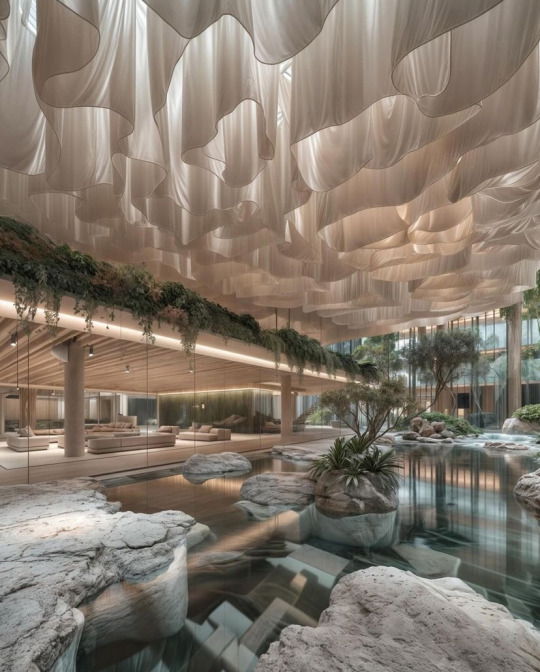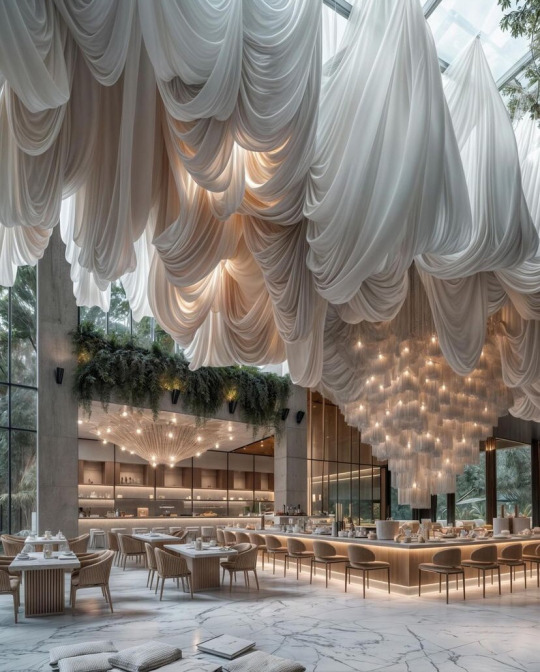#AI in Music Industry
Explore tagged Tumblr posts
Text
Artificial Intelligence Revolutionizes the Music World: The Case of "Neural Notes Revolution"
Artificial intelligence (AI) is rapidly transforming our world, permeating sectors from healthcare to industry, education to transportation. This technology, which aims to replicate and surpass human cognitive abilities, promises to revolutionize the way we live and work.
The applications of AI are numerous and ever-expanding: from medical diagnosis to autonomous driving, data analysis to content creation. A particularly intriguing field is music, where AI is demonstrating remarkable potential.
Recently, there has been much discussion about AI-based music generation platforms like "Suno" and "Udio," accused of violating numerous artists' copyrights to train their algorithms. These controversies highlight the complex ethical and legal issues that AI raises in the artistic field.
In this context, the Italian project "Neural Notes Revolution" emerges, demonstrating how, with the aid of AI programs, the study of algorithms suitable for targeted generation of musical styles, voices, song structures, and with adequate post-processing, it's possible to produce musical pieces of any genre and style, in any language, in relatively short timeframes.
The project also leverages other generative AI platforms such as OpenAI's ChatGPT (Microsoft group, of which Elon Musk was a co-founder), Anthropic's Claude AI, and Google's Gemini. These technologies allow for the generation of texts, both original and based on precise or imaginative prompts, in numerous languages, even using expressions typical of specific localities and dialects.
However, "Neural Notes Revolution" still faces some challenges. The results provided by ChatBOTs require careful verification, and in the music field, generation platforms have significant limitations. In particular, "Suno" and "Udio" lack a precise and rigorous syntax that allows for accurate results. Often, the outcomes are even opposite to those desired, forcing a trial-and-error approach. One of the major limitations is the near-total impossibility of having clear style changes within the same song.
Expected future developments include the ability to modify produced songs in a targeted manner. It would be useful to have separate files for the vocal part, the musical backing, and the lyrics in subtitle format. Moreover, there's hope to be able to modify individual parts of text or music, and above all, to have a correct and rigorously respected syntax for the song structure and use of styles.
The use of these platforms raises several issues. On one hand, they offer new creative possibilities and democratize music production. On the other, they raise concerns about copyright, artistic authenticity, and the future of work in the music industry.
In conclusion, while giving space to creativity, we are still far from competing with the styles, voices, and tones of artists of all time. However, in defense of the "new artists" of the AI era, it must be recognized that creativity and skill are still necessary to produce musical pieces of a certain depth. This is particularly relevant in a modern musical landscape that often offers music devoid of artistic and cultural significance. AI in music thus represents both a challenge and an opportunity, requiring a balance between technological innovation and preservation of human artistic expression.
#neuralnotesrevolution#ai#Artificial Intelligence#AI and Music#AI Music Generation#AI-Generated Music#Musical Algorithms#Digital Music#Musical Innovation#Music Technology#Automated Composition#Artificial Creativity#AI Music Production#Future Music#AI in Music#Music and Technology#AI Musical Instruments#AI-Assisted Composition#AI Music Software#Neural Networks and Music#AI in Music Industry#AI Music Innovations
3 notes
·
View notes
Text
youtube
How AI Destroys the Music Industry? | Ai Evolves
📌Welcome to the AI Evolves channel! In this video, we're diving deep into how AI (artificial intelligence) is reshaping the music industry worldwide. Discover the latest updates and insights into the impact of AI on music creation, production, and consumption. 📌Thanks For Watching: How AI Destroys the Music Industry? | ai evolves
#how ai will change youtube#how ai will change the music industry#how ai generate music#ai in music industry#chatgpt music industry#music production with ai ai generated music#How AI Destroys the Music Industry#Youtube
0 notes
Text
AI in Music Education: Revolutionizing Learning for Musicians
The integration of artificial intelligence (AI) in music education has ushered in a new era of personalized and accessible learning. From beginner musicians to seasoned professionals, AI is reshaping the way people learn, practice, and create music. This article delves into how AI-powered tools and platforms are transforming music education and the broader implications for the future of the music industry.
AI-Powered Tools for Music Learning
One of the most notable advancements in music education is the emergence of AI-driven applications designed to teach various aspects of music. Tools like Yousician, Simply Piano, and Melodics are leading examples that cater to learners of all skill levels.
Yousician: This app uses AI to provide real-time feedback on pitch, rhythm, and timing as users play their instruments. Whether learning guitar, piano, or vocals, students can see instant analysis of their performance, allowing for more targeted practice sessions.
Melodics: Tailored for aspiring keyboard, pad, and drum players, Melodics provides AI-generated exercises that adapt to a learner’s progress. It emphasizes skill-building through engaging challenges and personalized lessons.
Simply Piano: This app employs AI to recognize notes played on a physical piano or keyboard and adjusts lessons based on the user's pace and accuracy.
AI tools like these are democratizing music education by providing affordable alternatives to private lessons while ensuring quality instruction.
Personalized Learning Through AI
Traditional music education often follows a one-size-fits-all approach, which may not address the unique needs of individual learners. AI changes this by enabling personalized learning paths.
Adaptive Learning Algorithms: AI-driven platforms can analyze a student’s strengths and weaknesses to create customized lesson plans. For instance, if a student struggles with rhythm but excels in melody, the system will prioritize rhythm exercises.
Progress Tracking: AI tools monitor a learner’s progress over time, identifying trends and areas for improvement. This helps students stay motivated and ensures continuous development.
Flexible Pacing: Unlike traditional lessons, where learners must adhere to a fixed schedule, AI allows students to learn at their own pace. This flexibility makes music education more inclusive, accommodating learners with varying commitments and learning speeds.
AI in Teaching Music Theory
Music theory, often considered the backbone of musicianship, can be challenging for beginners. AI simplifies this by breaking down complex concepts into digestible lessons.
Interactive Visualizations: AI applications often use dynamic visual aids to teach scales, chords, and progressions, making abstract concepts more tangible.
Instant Feedback on Exercises: Platforms like EarMaster use AI to provide immediate responses to ear training and sight-reading exercises. This interactive approach ensures learners understand their mistakes and make corrections in real-time.
Gamification: Many AI tools incorporate gamified elements to make learning music theory engaging. Students earn rewards or unlock levels as they master concepts, transforming a traditionally dry subject into an enjoyable experience.
AI-Assisted Practice Sessions
Practicing an instrument is essential for mastering it, but practicing effectively is a skill in itself. AI tools enhance practice sessions by providing structure and feedback.
Virtual Accompaniment: Some AI platforms allow learners to play alongside virtual orchestras or bands, offering a dynamic and immersive practice experience.
Error Detection: AI systems can identify specific errors, such as incorrect notes or timing issues, and offer suggestions for improvement. This level of precision was previously only available through human instructors.
Encouraging Consistency: Many apps send reminders and track streaks to encourage regular practice, fostering better habits among students.
Bridging the Gap for Self-Taught Musicians
Self-taught musicians often face challenges such as limited feedback and lack of structured learning. AI bridges this gap by providing resources previously accessible only through formal education.
Virtual Tutors: AI acts as a 24/7 tutor, available anytime for guidance and feedback. This empowers individuals who cannot afford traditional lessons.
Open Access to Resources: Many AI-powered tools offer a wealth of free or low-cost learning materials, making high-quality education accessible to a global audience.
Overcoming Isolation: AI platforms often include community features, enabling self-taught musicians to connect with peers and share progress, fostering a sense of belonging.
AI and Music Composition Education
For those interested in creating original music, AI is a powerful ally. Tools like AIVA (Artificial Intelligence Virtual Artist) and Amper Music assist learners in composing, arranging, and orchestrating music.
Guided Creativity: AI composition tools provide templates and suggestions, helping beginners experiment with musical ideas.
Real-Time Feedback: As users create, AI offers immediate feedback on harmony, structure, and balance, refining their skills as composers.
Expanding Possibilities: These tools encourage learners to think beyond traditional boundaries, experimenting with genres and styles they might not have considered otherwise.
Impact on Traditional Music Education
The rise of AI in music education has sparked debates about its impact on traditional teaching methods. While some fear that AI may replace human instructors, others argue that it serves as a complementary tool.
Enhanced Teacher Capabilities: AI helps teachers identify student weaknesses more efficiently, allowing for focused instruction during lessons.
Supplementing Classroom Learning: AI tools provide additional practice and resources outside the classroom, reinforcing concepts taught by instructors.
Expanding Reach: Traditional educators can use AI to offer remote lessons, reaching students who might otherwise lack access to quality instruction.
Challenges and Limitations
Despite its many advantages, AI in music education is not without challenges:
Lack of Emotional Connection: Unlike human instructors, AI cannot provide emotional support or mentorship, which are often critical to a student’s development.
Technical Barriers: Access to AI tools requires reliable internet and compatible devices, which may not be available to all learners.
Over-Reliance on Technology: There is a risk that students may become too dependent on AI, neglecting the creative and intuitive aspects of musicianship.
The Future of AI in Music Education
As AI technology continues to evolve, its role in music education will only expand. Emerging trends include:
AI-Powered Virtual Reality (VR): Combining AI with VR to create immersive learning environments where students can practice in simulated concert halls or interact with virtual bands.
Cross-Cultural Learning: AI can help learners explore global music traditions by providing culturally diverse lessons and resources.
Emotionally Intelligent AI: Future advancements may enable AI systems to recognize and respond to students’ emotional states, offering encouragement and adapting lessons accordingly.
In conclusion, AI is revolutionizing music education by making it more personalized, accessible, and engaging. While it cannot replace the human touch of a dedicated teacher, it serves as a powerful tool that complements traditional methods. As technology continues to advance, AI will undoubtedly play an even greater role in nurturing the next generation of musicians, democratizing access to knowledge, and fostering a love for music worldwide.

0 notes
Text

#UMAW#United Musicians and Allied Workers#United Musicians & Allied Workers#Spotify#Spotify Wrapped#heck spotify#AI#Daniel Ek#corporate greed#Capitalism#music industry#music#streaming platform#military#military industrial complex#military AI#helsing#helsing AI
162 notes
·
View notes
Text
Listen after Chappell Roan literally promoting AI “art” I’m just gonna say this; Chappell Roan fans have always given me queer Swifties vibes I mean think about it their parasocial as hell I mean if you do a comparison you’ll find no difference between the two. The difference is one are just a bunch of straight cis white pick me women who still cry about their breakup from middle school the other are those lesbians/queer pick mes who get mad when anyone who isn’t what they consider queer enough doesn’t like them and won’t date them and they cry wondering why in the hell they don’t want to date them
I remember I got attacked and sent death threats for calling her an industry plant when my god that’s what she literally is. She’s literally the definition of one
She’s not “revolutionary” or “radical” she’s just another industry plant with too much money, no creativity whatsoever besides ripping off glam rock, Lady Gaga and Madonna and her songs are straight ass and wouldn’t even be popular had it not been for some insufferable pick me queers using it to prove their “different” but doesn’t want to support the visual artists who helped her get to where she was
Yes ok she “worked so hard” as some of you fans claim but let me ask you just this once;
If she worked so hard and recognizes hardwork for artists then why does she have to use the easy way out instead of encouraging artists to work on their art?
Can you tell me that?
Also just fyi to make you Chappell fans mad
Good Luck Babe and You Belong to Me are the same pick mes anthems in different fonts
And yes her stans are gonna be blocked their so stupid they need to defend a millionaire anyways so it’s not worth arguing with them
#anti chappell roan#pick me#I’ve been saying this for like a year#her musics nothing but actual industry plant garbage#it’s not revolutionary or inspiring it’s actually shit like sounds like shit#support real artists#fuck ai#fuck ai art
42 notes
·
View notes
Text
British musicians release a silent album to protest plans to let AI use their work | AP News
#britain#uk#music industry#ai#artificial intelligence#copyright#social justice#us politics#politics#british politics
32 notes
·
View notes
Text
we know that Reko's father forced her into the industry at an early age, but it's not entirely clear what genre. The idea of it being an 'industry' definitely implies she was more of a pop idol since there isn't really a 'classical' industry in the same vein, though there is still definitely heavy competition and a lot of notoriety to be gained through being very skilled at classical music, especially at an early age, so I wouldn't be so quick to write that off, either. Even so, the plot line of her being 'forced to make music she didn't want to make' and her father being blinded by money definitely feels like it makes more sense in the context of a popstar. In my personal opinion, I like the pop idol route because it really emphasizes the distinction between her current views and aesthetic and the one her father would've been trying to get her to be. A sudden stark rebellion by going super edgy and emo in middleschool contrasts with her needing to be seen as nice, innocent, happy all the time (and probably a fair bit more feminine than she actually felt, too, since alt styles are heavily associated with androgyny). Its also worth noting that she mentioned crushing multiple huge industry offers throughout her later years, which further implies she had a strong reputation already. However logic is pulling on my sleeve and it's telling me that it honestly feels weirder for a 10-13 (this age range being chosen with the logic that it would've had to been *before* or she entered middle school, as per her personal account) year old kid to be a super successful pop idol than a highly successful classical music prodigy. Though, I guess there's the possibility her father actively lied about her age to get her in the idol industry.
#part of this could be a cultural translation issue in the sense of me being a westerner#keep in mind in japan elementary middle and high school are different lengths than their counterparts in the US#but its only pushed forward by about a year as far as im aware#which means she'd still be super young for the majority of this#which is kind of strange timing all things considered#it feels like it would make more sense if she gained notoriety during her middle school years under her father and then rebelled as#a highschooler if anything#but i dont know much about japanese idol culture either#but id assume idols existing that young let alone getting popular that young is pretty uncommon?#maybe its even a literal translation issue rather than a cultural one? who knows#reko yttd#reko yabusame#yabusame reko#yttd rant#your turn to die#kimi ga shine#the reason i mark it as so early is because reko's ai states she rebelled in middle school#the way its phrased makes it sound like she was already in the industry before while at that point#she claims that she started composing music and lyrics in grade school#so i think the intent was that once she got labeled as 'gifted' she was probably an idol for i'd imagine more than a year or two#i guess theres always the plain and simple answer that she just started school a year or two later? but even then...#obsession original#this is an old ass draft (from maybe november?) and im finally releasing it from captivity#samurai yaiba
12 notes
·
View notes
Text



ai hoshino 🤝 taylor swift
being their world’s music industry fr
#i was looking at the second pic of taylor and was like “wait where have i seen that pose b4?#and then i looked at ai#SAME POSE BRO#also pls don’t take this seriously i just wanted to post it cuz i think it’s cool ok ☹️#anyways i love both of them and their music cuz it’s top tier#ai hoshino#oshi no ko#oshi no ko cover#taylor swift#taylornation#fearless tv#the eras tour#swifties#anime#oshi no ko anime#oshi no ko manga#taylor swift is the music industry#the prettiest girlies#the first pic of taylor perfectly matches ai’s pose more but i also love the second pic too much to not include it
17 notes
·
View notes
Text

23 notes
·
View notes
Text
Your Dystopia, My Utopia

#industrial#electronic#electronic music#ebm#rhys fulber#frontline assembly#future#cyberpunk art#cyberpunk#inspired#ai#ai generated#ai art#ai artwork#artificial intelligence#chatgpt#tower#babel#steampunk#science#scifi#scifiart#sci fi and fantasy#retro scifi#independent music#bandcamp#universum#digital illustration#digital art#digital drawing
8 notes
·
View notes
Text
0000
0000



#ai artwork#ai generated#ai art#ai#artificial intelligence#architecture#ai gallery#bandcamp#industrial#industrial music#bill leeb#city#electronic music#2025#new year 2025#new year#celebration#steampunk#cyberpunk#fiction#clock#future#futurology#monitor#clocks#ai digital art#art ai#machinery#universum#electronic
10 notes
·
View notes
Text
Space travel - Renturion planet
All space travel (Click!)






#aiagcosmicjourney#ai#ai art#bandcamp#fantasy#scifi#space#outer space#other planets#surreal#city#ufo#anime#anime art#digital art#digital artist#ai drawing#journey#future#fiction#astronomy#nasa#inspiration#electronic#ebm#industrial#equinox#independent music#music#chillout
7 notes
·
View notes
Text
TEEN_IDLE
#cyberspace#goth#whereismaradysprosium#ai#cyber#lain#robot#serial experiments lain#grunge#bpd#music#cover#marina#marina and the diamonds#teen idle#electra heart#industrial#piano#ballad#my music#new music#SoundCloud
6 notes
·
View notes
Text









„Fabricated Elegance“ by vojtek morsztyn 🖤
Artificial Intelligence in: Architecture, Industrial Design and Digital Arts 🎭
Vojtek Morsztyn is a creative designer who is combining traditional design with a new technology in the field of Industrial and Interior Design.
#Travelingwithoutmoving 🧭
#architecture #architecturephotography #architecturelovers #architectureporn #architecturedesign #architecturelover #architecturephoto #architecturedaily #architecture_hunter #architecturedetail #architecturephotos #architecturedose #architectureanddesign #architecturelife #architecturegram #architecturelove #architecturephotograpy #architectures #architectureinspiration #architecture_view #architektur #architekturfotografie #architekturfotograf #architektur_erleben #architekturliebe #architekturporn #architekturelovers #furniture #furnituredesign #furnituremaker #furnituredesigner #furnitureartist #furnituremanufacturer #furnituremodern #furnitureclassic #furnitureinterior #furniturerestoration #furnituremaking #möbel #møbel #möbeldesign #holzmöbel #möbelrenovering #møbeldesign #möbelliebe #möbelmanufaktur #designmöbel #vintagemöbel #möbelrestaurierung #möbelstück #möbelklassiker #möbelmitgeschichte #möbelaffär #designermöbel #interiordesign #design #homedecor #home #decor #interior #decoration #interiors #architecture #homedesign #luxury #style #designer #sofa #livingroom #art #inspiration #furnituredesign #mobilya #homesweethome #dekorasyon #kitchen #interiordesigner #modern #interiordecor #love
Fables & Fairytales - Deniz Kurtel Remix by N/a, Rosina 🎧

#fucking favorite#vojtek morsztyn#designer#Fabricated Elegance#Fabricated#Elegance#4/2024#Design#industrial#Interior#interior design#Architecture#Artificial Intelligence#ai art#Artificial Intelligence art#industrial design#Digital Arts#x-heesy#now playing#music and art#contemporaryart#newcontemporary#new contemporary#l o v e#aesthetic#ai generated
32 notes
·
View notes
Photo

(via Music industry giants allege mass copyright violation by AI firms | Ars Technica)
Universal Music Group, Sony Music, and Warner Records have sued AI music-synthesis companies Udio and Suno for allegedly committing mass copyright infringement by using recordings owned by the labels to train music-generating AI models, reports Reuters. Udio and Suno can generate novel song recordings based on text-based descriptions of music (i.e., "a dubstep song about Linus Torvalds").
The lawsuits, filed in federal courts in New York and Massachusetts, claim that the AI companies' use of copyrighted material to train their systems could lead to AI-generated music that directly competes with and potentially devalues the work of human artists.
Like other generative AI models, both Udio and Suno (which we covered separately in April) rely on a broad selection of existing human-created artworks that teach a neural network the relationship between words in a written prompt and styles of music. The record labels correctly note that these companies have been deliberately vague about the sources of their training data.
14 notes
·
View notes
Text
Music Monday A Clash of Eras
Too many songs about love, not enough about the march of industry rolling into transhumanism.
Bang Hiss Roll was my attempt at creating a sort of "Industrial (Film) Techno" inspired by the kinds of "industry on the move" shorts. Later, an 80s remix happened, because no matter what tool I use, I'm still me.
#music#ai music#ai assisted music#my lyrics#suno AI#the deepdreamnights robot band#soundcloud#80s#fauxstalgia#synthpop#jam handy#industrial films#music monday#SoundCloud
9 notes
·
View notes